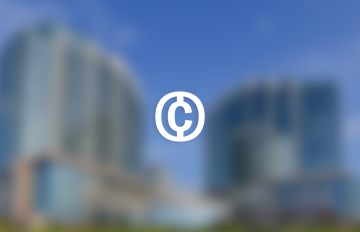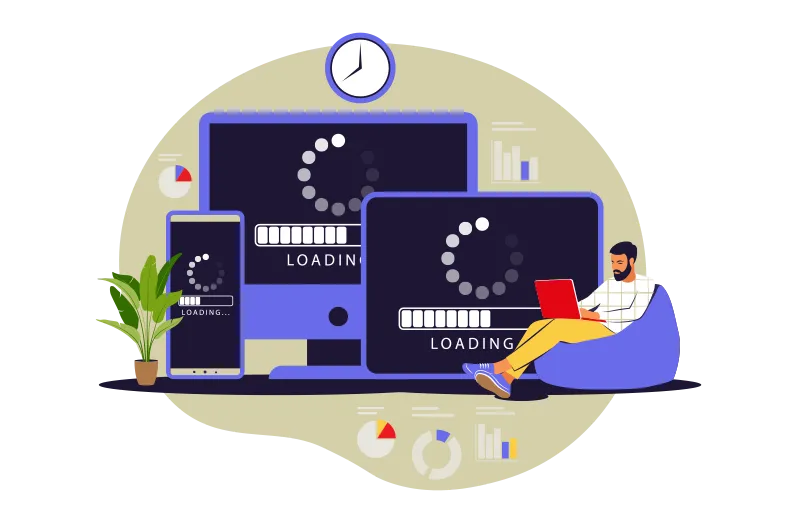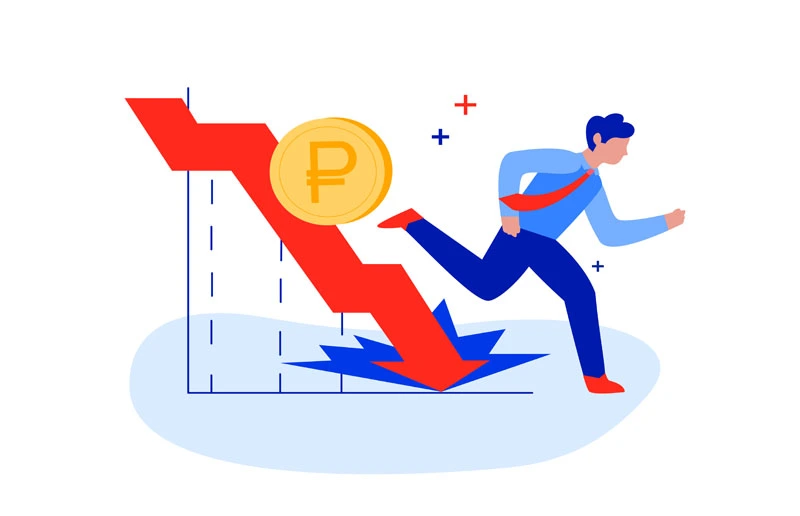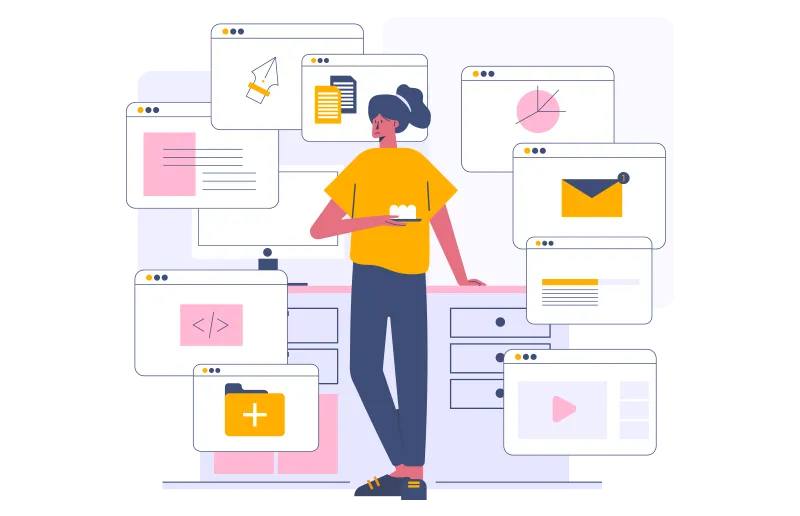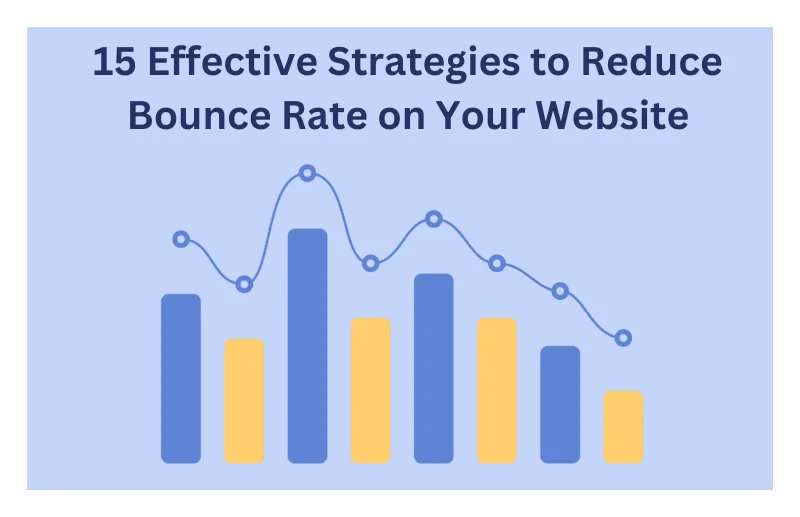Page load time is the amount of time it takes for a web page to load fully, and it is an important measure of the user experience as it directly affects the overall performance of a website. Moreover, page load time is significant because it directly impacts the user’s perception of the website’s quality, as well as its search engine ranking. A slow page load time can lead to a decrease in page views, a decrease in page engagement, and, ultimately, a decrease in conversions. Therefore, it is important for website owners to strive to keep their page load time to a minimum.
In this blog, we will explore how a slow page load time can lead to an increased bounce rate. But first, let’s understand the importance of a low bounce rate in improving website performance. Without further delay, let’s dive in and learn why a low bounce rate is so beneficial for website performance.
Importance of Bounce Rate in Enhancing Website Performance
Having a low bounce rate is essential for improving the overall performance of a website. A low bounce rate indicates that visitors are staying on the website for longer and engaging with the content. This will lead to more page views, more time on site, and better conversions.
Additionally, a low bounce rate indicates that the website is providing a user experience that is satisfactory, as visitors are not immediately leaving the website. It also suggests that the website has quality content and relevant information for visitors. A low bounce rate is, therefore an important indicator of a website’s performance and should be actively monitored and improved. Furthermore, we will discuss the top factors that play a role in the web page load time of a website.
Top Factors that Affect Page Load Time
Server Response Time: The server response time is the amount of time it takes for a web server to respond to a user request. A slow server response time can significantly increase page load time and negatively impact the user experience. To improve server response time, you need to ensure the server is properly configured and equipped with enough processing power and memory to handle the requests.
Large File Sizes: Large file sizes can also slow down page load times. This is because it takes longer for the server to transfer large files over the network. To reduce file sizes, you can use image optimization tools to compress images and minify code to remove unnecessary white space.
Excessive HTTP Requests: Every time a user visits your website, the browser has to send an HTTP request to the server. If there are too many requests, it will take longer for the page to load completely. To reduce HTTP requests, you can combine multiple files into one, use content delivery networks, and enable file caching.
Poorly Optimized Code and Images: Optimizing code and images are essential for website performance. Unoptimized code and images can take up a large amount of bandwidth and slow down page load time. To optimize code and images, you can minify code, compress images, and use sprite sheets to combine multiple images into one file.
All the factors influencing page load time have been discussed. Now, let’s move on and explore ‘bounce rate’ and how it’s calculated. Additionally, we will consider the consequences of slow page loading on the Bounce rate.

Want to read this blog offline?
No worries, download the PDF version
now and enjoy your reading later…
 Download PDF
Download PDF Impact of Slow Page Load Time on Bounce Rate
Bounce rate is a metric used to measure the percentage of single-page visits to a website. It is calculated by dividing the number of visitors that leave the site after viewing only one page by the total number of visitors to the site. A high bounce rate usually indicates that visitors are not finding what they are looking for, so it is important to look at what could be causing it, such as unclear navigation or slow page load times.
Research has also shown that there is a strong correlation between page load time and bounce rate. Studies have found that as page load times increase, the bounce rate increases as well. This means that if a page takes too long to load, visitors are more likely to leave the page without taking any action. Additionally, the more page resources a page has, the longer it takes to load, which leads to an even higher bounce rate. To reduce bounce rates, it is important to optimize page load times and keep page resources to a minimum.
On the other hand, slow page load times are a major factor for visitors leaving a website. When visitors are waiting for a page to load, they become impatient and frustrated, which leads to them leaving the website. Slow page load times also give visitors the impression that the website is outdated and not worth their time and that it would be better to find a website that is quick to respond. Additionally, slow page load times can lead to decreased conversions as visitors may not wait around long enough to complete a purchase or signup form. Ultimately, slow page load times can decrease user engagement and result in fewer conversions, thus decreasing the website’s overall success.
Consequences of High Bounce Rate
Negative impact on search engine rankings: A high bounce rate can have an adverse effect on your search engine rankings. Search engines use signals from user behaviour to rank websites in their results. If visitors arrive on your website and immediately leave, this could be a sign that the content on your website is not up to par. As a result, your rankings could suffer as a result of having a high bounce rate.
Loss of potential customers and revenue: One of the biggest consequences of a high bounce rate is the loss of potential customers and revenue. If visitors leave your website after viewing one page, they won’t see your products, services, or offers. This can lead to fewer conversions and, therefore, less revenue.
Lower engagement and reduced opportunities for user retention: Lastly, a high bounce rate can lead to lower engagement and reduced opportunities for user retention. If visitors view one page and then leave, you will have fewer opportunities to engage with them and draw them back to your site. This can lead to a lack of repeat customers and overall decreased user retention.
How to Improve Page Load Time and Reduce Bounce Rate
Take Help of Our Website Speedy Tool: Our website Speedy Tool is an effective way to improve page load time and reduce bounce rate. It provides an easy-to-use interface that allows users to quickly analyze the performance of their website and identify areas of improvement. The tool also offers detailed reports that provide insights into page load times, the amount of time it takes for a page to load, and how the page’s performance compares to other sites. In addition, Speedy Tool also provides advice on how to optimize page speed, such as compressing images and minifying code. Taking advantage of Speedy Tool’s features can help improve page load time and reduce bounce rate, resulting in a better user experience and increased conversions.
Use a Content Delivery Network (CDN): A content delivery network (CDN) is a great way to speed up your website’s page load time. A CDN is a network of servers that are distributed across the globe, meaning that the content being served is closer to the user, providing faster download times. This means that your website’s content is served to users more quickly, resulting in a faster page load time and lower bounce rate.
Optimize Images and Videos: Images and videos are usually the largest components of a website, meaning they can slow down page load times significantly. To optimize their performance, you should compress your images and videos and reduce their sizes as much as possible without compromising quality. This will help reduce the page load time and improve the overall user experience.
Enable Browser Caching: Browser caching is a technique that stores a copy of a web page on the user’s computer so that it can be loaded faster the next time they visit. Enabling browser caching on your website can significantly reduce page load times and improve the overall user experience.
Quick Load Times, Quicker Conversions, Reduced Bounce Rate. Let’s Go!
Boost Website Speed NowReduce the Number of HTTP Requests: Having too many HTTP requests can slow down a website’s page load time. To reduce the number of HTTP requests, you should minimize the number of plugins and scripts running on your website and combine the code into fewer files. This will help reduce the total number of requests and therefore improve page load time.
Minimize and Compress Code: In order to reduce page load time and improve the overall performance of your website, it’s important to minimize and compress your website’s code. This can be done manually by removing unnecessary code or automating it through minification. Minifying your code will reduce the size of the files, resulting in improved page load time and reduced bounce rate.
Conclusion
In conclusion, slow page load time has been proven to have a direct link with an increased bounce rate. This means that if a website takes too long to load, visitors are more likely to leave the page without interacting with it, which in turn leads to a higher bounce rate. Therefore, Monitoring page load time is essential for providing a good user experience on your website. It helps you identify any areas of your site that are taking too long to load, which can result in visitors leaving the page.
February 20, 2023
Leave a Comment












